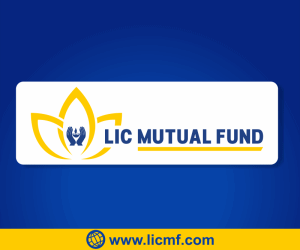Know Your Rights and Fulfil Your Duties as a Mutual Fund Investor

As an investor of Mutual Funds you are aware of the fundamentals of Mutual Funds, the process of return generation and all that as an investor you must be aware of. However, a part of you still wonder if the information you have is enough. You are willing to bet there are certain parts and aspects that you are not aware about. Things that you do know are not a cause of worry to you as much as you fret about the bits you do not know. The information that a lot of investors do not have or are not instrumental to investments is often the ones in fine print. Remember the times when we are creating an online account and there is a checkbox next to terms and conditions. Do we read it? Of course most of us do not. We just check the box and move on with our lives.
There are certain rights and duties that Mutual Fund investors have towards their investments. Securities Exchange Board of India (SEBI) http://www.sebi.gov.in/sebiweb/ has come up with certain rights and compliances to ensure Mutual Fund companies maintain transparency and investors remain updated with their investments. It has also created online mechanism where investors can voice out their complaints. Most of the fund houses being investor focused extend much more than regulatory obligations. Here are some of the rights of Mutual Fund investors:
Scheme Related Documents or SID
"Mutual Fund Investments are subject to market risks. Please read all scheme related documents carefully". You must have heard or read this statement so many times after every Mutual Fund and SIP advertisement in print, web or television media. While investors are aware about investment being subject to market risk, they hardly have a clue of what scheme related documents are and what constitutes these documents. This is quick checklist of the documents that an investor must read through before investing:
- Scheme Information Document (SID): This document highlights all the relevant information that an investor must be aware about when they are making investments. The investor is made aware of the nature of the scheme, the strategy of investments and asset allocation, the benchmark of the scheme, details of fund manager and fund management team, their educational qualification and experience, fees and expenses of the scheme and details of different investing options, Address of their Head Office and branches and so on. To have a look at the Scheme Information Document, you may click this link and see http://www.icicipruamc.com/Downloads/sid-mutual-fund.aspx
- Statement of Additional Information (SAI): This document reveals all information important for investment but may not be directly relevant to the scheme. It includes information about the Asset Management Company, procedure followed for fund performance, details of key personnel, sponsor and trustee details their laws and regulations, details of auditors, tax and legal issues and other general information. Please check a Statement of Additional Information online http://www.icicipruamc.com/download/Statement-of-Additional-Information.pdf. This document is normally updated as and when there is any change in any of the information at AMC or Fund level etc. and sent to investors either through email or post
- Key Information Memorandum (KIM): This information is generally provided with Common Application Form and therefore can be said that it is the integral part of the application form which the investor fills up and sign. It contains scheme level information such as product labels, key scheme features, scheme performance record, terms conditions of investing along with the application form and so on. In a nutshell, all the desired information which the investors must know and read while investing in the mutual fund scheme. Check this https://www.sbimf.com/docs/default-source/latest-key-information-memorandum-kim/kim-common-debt-schemes8E72011F8E96
- Fund Fact Sheet: This is one of the most important documents you should have a look prior and post to investing in a fund. This contains the historical and current performance and information of the scheme, portfolio details, like - the company and sectors in which the fund has invested and their respective percentage allocations, performance of the fund vis-à-vis benchmark, NAV of the schemes and dividend history etc. accompanied by graphical representation. This allows the investor to get a holistic idea about the fund before initiating any form of investment and even after the investments. Check this https://www.reliancemutual.com/InvestorServices/FactsheetsDocuments/RMF-FactsheetNovember2015.pdf
What and how do you read them
If you have ever read or even seen a Scheme Information Document the first thing that will cross anyone’s mind is this is too long. So instead of going through the sheer volume and then processing the information, you forgo the necessary step completely. In this process you may be losing out on knowing some vital information about your investment. So how do you read those documents? Simple, if you do not want to read it entirely then rather read the highlights or scan through the important parts which are given in the index at the start of the documents along with page number. There are the pointers that you must read in the document:
- Past Performance: The past performance is not a prediction about the future performance. However, it is indicative of the general performance of the fund and how the fund has performed in good and adverse markets. You must also check how the fund has done in past in comparison to the category and benchmark returns
- Fee, Loads, Taxes and Hidden Costs: This is an important part where an investor must know about all the schemes fees, the entry and exit loads, the taxation policies and hidden costs if any. If the scheme has an exit load then what is the percentage. The expenses ratio also is indicative of how frugally the scheme is being managed or if the management is charging a high fee. Here also you need to check how less or more the fund is charging in comparison to its peers.
According to a Securities and Exchange Board of India (Sebi) guideline, for equity schemes, the AMCs can charge 2.5 per cent for the firstर100 crore, 2.25 per cent for the nextर300 crore, 2 per cent on the nextर300 crore and 1.75 per cent on rest of the assets. For debt, the slabs are however 25 bps less. For firstर100 crore, the expense ratio can be 2.25 per cent and so on.
However, if you are an investor not living in any of the top 15 cities, AMCs might charge you 30 bps more to increase the retail participation of mutual funds beyond the top 15 cities. This is according to a regulation which SEBI announced in August 2012. - Investment Objectives: These highlight the aims and objectives of the scheme. The strategy of the scheme and allocation of assets. The goals that are related to this fund, expertise of the fund manager. It is very important to check whether the scheme objective is matching with that of your investment objective.
- About the Asset Management Company: This is important because it gives you an overview about the presence of the AMC in the market and how they are received by the investors and fellow AMCs. Their investment philosophy and the aims and objectives of running the AMC and their norms for running the customer service. The other important thing here to see is the Trustee Board and the background of the sponsors who have floated the Asset Management company (AMC)
After a through reading of these factors, if you have been satisfied on all counts, then you may go ahead with the investment. This will ensure you are aware of the terrain in which you are stepping in to.
Unit Holder Account Statement
Once you have made an investment in a certain scheme, the AMC should issue you an account statement. The statement states the number of units that has been allotted against your investment and the price along with an unique Folio or Account number. With effect from October 1, 2011, Pursuant to SEBI guidelines, Investors are supposed to receive an allotment confirmation specifying the units allotted by way of email and/or SMS within 5 Business Days of the initial investment transaction to the Unit holders who have registered their e-mail address and/or mobile number. Thereafter, a Consolidated Account Statement (CAS) shall be sent to the Unit holders in whose folios transactions have taken place during that month, on or before 10th of the succeeding month by post or courier or email as applicable or the option chosen by the investor while filing up the application form.
However, in case of non receipt, on specific request received from investors, AMCs will provide an account statement to the investors within 5 Business Days from the receipt of such request.
Distribution Fee or Commission
As an investor if you are investing through a financial advisor or a distributor, you have the right to question and ask about their commission rates. If a certain agency or individual is trying to persuade you to invest in a product ask them the commission for that particular product and ask about other products as well. It could be they are trying to sell a product because of its higher commission; you must ask further regarding the suitability of the scheme to your personal goals and interest. If an agency or advisor is unwilling to reveal the distribution fees and commission then you may want to look for other sources of investment.
However, there are many distributors and platforms who have openly declared the commission rates on their website and we are also aware about distributors who maintain a copy of the commission rates in their office for investors to see. The idea is to make the whole process transparent.
Interest on Dividend and Redemption
An AMC when it declares dividend of a certain scheme, you are entitled to receive it within 30 days. If the AMC does not allot the dividend within 30 calendar days, then as an investor you are entitled to receive an interest payment of 15% per annum for the period of delay.
Redemption is one aspect of investments which ensures that you have access to your investment when you need it. The redeemed amount is supposed to reflect in your bank account within 10 working days. In case this does not happen, you are entitled to receive an interest payment of 15% per annum for the period of delay.
However, as an investor you should note that in order to get the dividends and redemption credits direct in your bank account, you should provide the MICR No. and IFSC Code of your bank account while applying to invest in a mutual fund scheme.
Keeping the Investor Updated
As an investor you are entitled to regular updates in the form of e mails, text messages and other means of communication. Investors should have an open communication channel through which they have access to all the information regarding their portfolio. The AMCs are supposed to inform investors if any changes in the scheme have been brought about which could impact the present investments. In case the AMCs fail to carry out communication, as investors you have the right to question the organization and take necessary steps either with SEBI or AMFI.
To get all the information in time, as an investor you should notify your email id while preparing the KYC and also while filing up the application form. Email communication is faster, safer and eco friendly. All the investors should have one unique mobile number and email id across all his or her mutual fund investments. In case you have not updated your contact details recently in your KYC, it is time to update the same and stay in touch with your investments through one contact details.
Complaint Redressal System
Most of the fund houses being investor focused extend much more than regulatory obligations. The best way to contact an AMC is to visit their website and get the details from contact us button. Most of the Asset Management Companies have dedicated grievance redressal page or customer service page wherein you can register your grievances or complaints. Some of these pages will look the following –
https://www.sbimf.com/ContactUs/Grievances.aspx
https://www.reliancemutual.com/investor-services/customer-service/grievance-redressal-process/
Conclusion
There is a rising tide of investor awareness where investor’s are being told about their rights and duties. This allows the Asset Management Companies and the fund managers to maintain transparency in all the aspects of fund management process. Investing in regulated schemes has many distinct advantages, a key advantage being the rights of investor. It provides a platform for investors where they have a clear view of their investments and the possibility of return generation.
The investors should be sure of funds they have invested in if they are in accordance with the fund’s objective. There are no hidden costs or unsaid extra charges except for the once already mentioned in the various documents mentioned above. Unlike unregulated schemes where there are hidden costs and commissions which takes away a substantial part of the fund. Hence, know rights and exercise your duties and enjoy the wonderful process of investing in Mutual Funds.
Queries
-
What is the benefit of mutual fund STP
Aug 29, 2019
-
How much to invest to meet target amount of Rs 2 Crores
Aug 26, 2019
-
Can I achieve my financial goals with my current mutual fund investments
Aug 24, 2019
-
Can you tell me return of various indices
Aug 19, 2019
-
What would be the post tax return on different investments
Aug 18, 2019
-
Which Principal Mutual Fund scheme will be suitable for my retirement corpus
Aug 16, 2019
-
What is the minimum holding period for availing NCD interest
Aug 4, 2019
Top Performing Mutual Funds
Recommended Reading
Fund News
-
DSP Mutual Fund launches DSP Nifty Next 50 ETF
Dec 19, 2025 by Advisorkhoj Team
-
DSP Mutual Fund launches DSP Nifty 500 Index Fund
Dec 19, 2025 by Advisorkhoj Team
-
Kotak Mahindra Mutual Fund launches Kotak Nifty Next 50 ETF
Dec 18, 2025 by Advisorkhoj Team
-
The Wealth Company Mutual Fund launches The Wealth Company Gold ETF
Dec 16, 2025 by Advisorkhoj Team
-
Axis Mutual Fund launches Axis Gold and Silver Passive FOF
Dec 10, 2025 by Advisorkhoj Team














